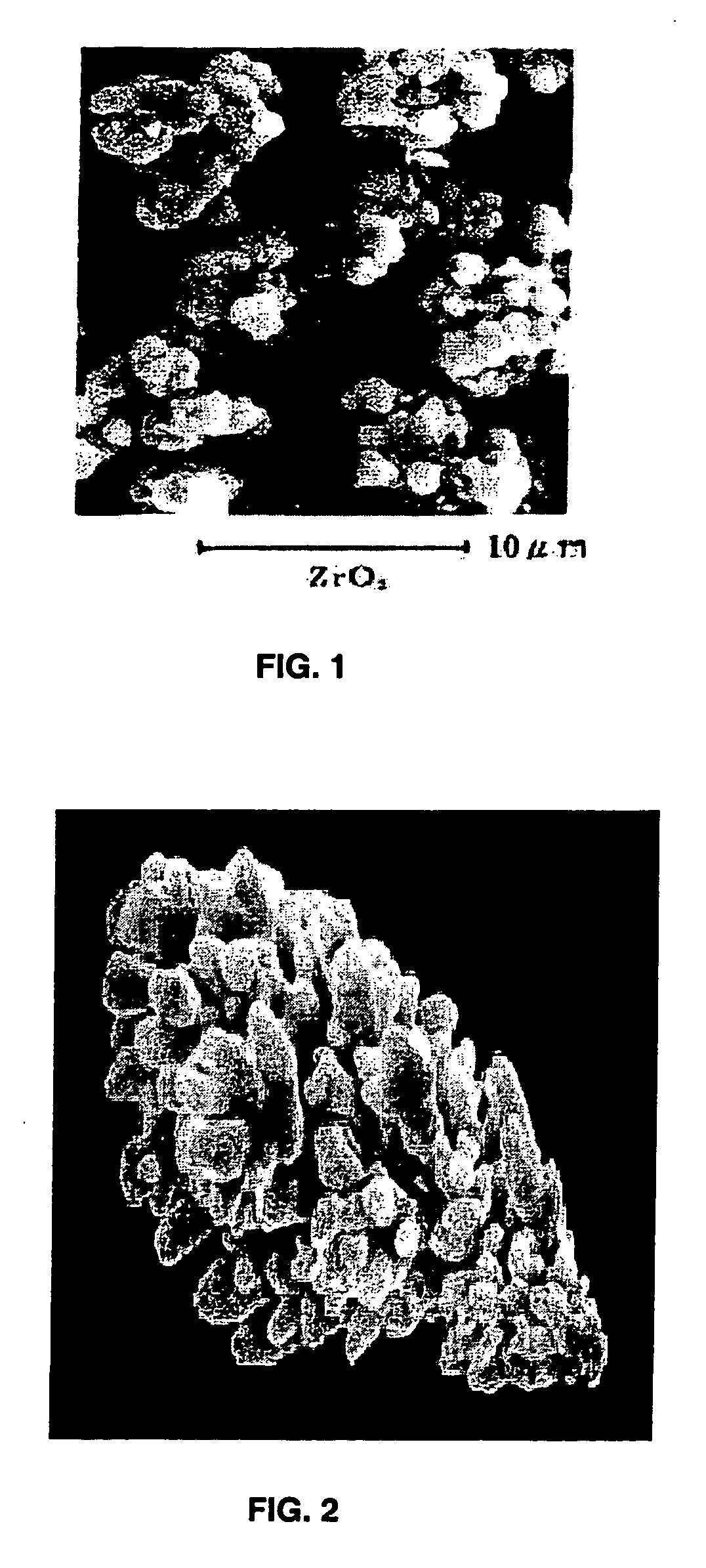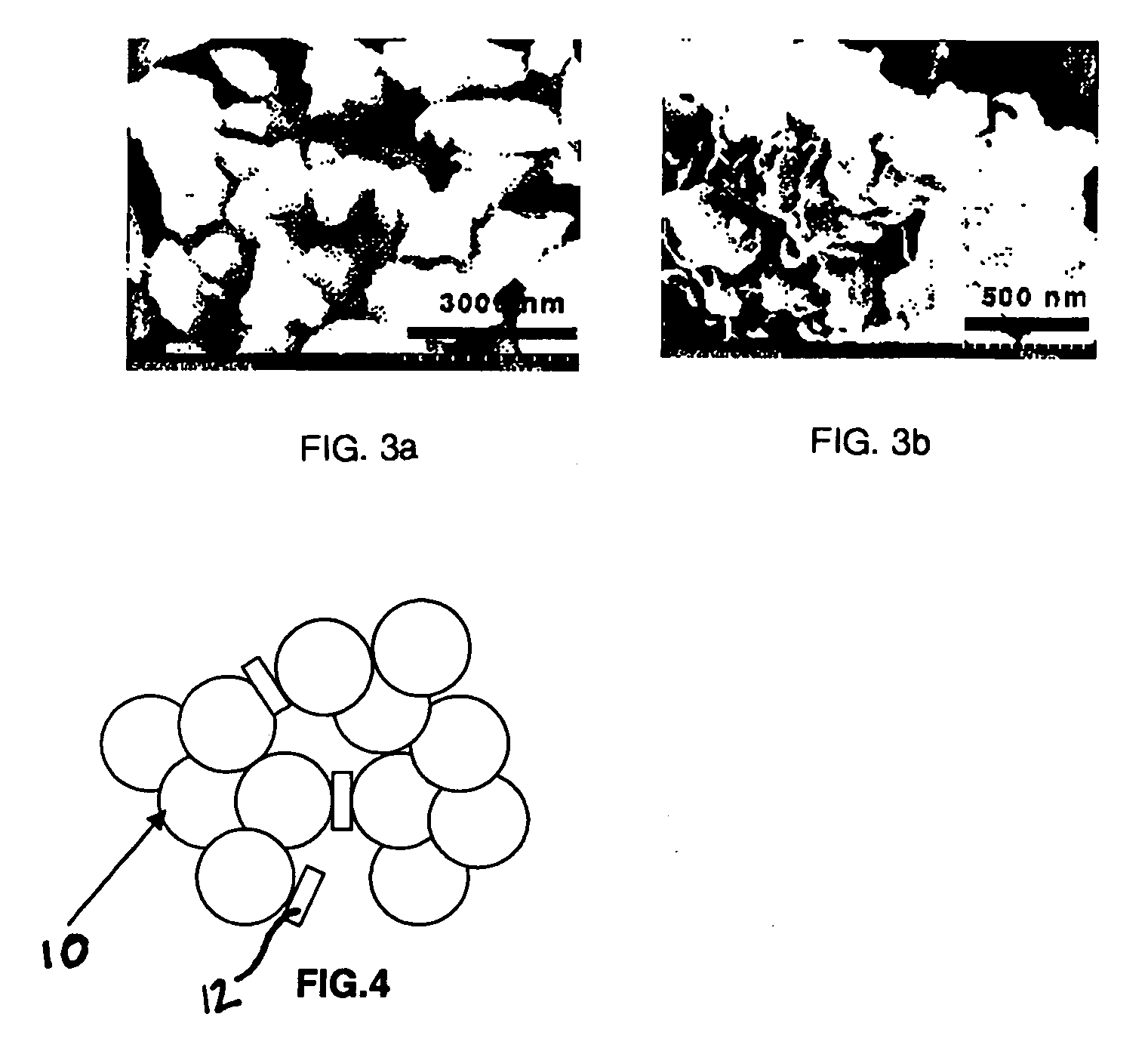Lithium ion secondary battery
- Summary
- Abstract
- Description
- Claims
- Application Information
AI Technical Summary
Benefits of technology
Problems solved by technology
Method used
Image
Examples
Embodiment Construction
[0042] Exemplary embodiments of the present invention will now be described with reference to the accompanying drawings. An exemplary method for manufacturing an electrode assembly of a lithium ion secondary battery according to one embodiment of the present invention will also be described in detail with reference to the accompanying drawings.
[0043]FIGS. 1 and 2 are scanning electron microscope (SEM) photographs of particle clusters of zirconium oxide particles. The zirconium oxide particles constitute the ceramic material of the porous membrane according to one embodiment of the present invention. FIGS. 3a and 3b are SEM photographs of scale-like ceramic particles shown at different magnification rates.
[0044] A method for manufacturing an electrode assembly of a lithium ion secondary battery generally comprises first forming two electrodes by applying a slurry containing a binder resin and an electrode activation material to a current collector. A porous membrane is then dispose...
PUM
| Property | Measurement | Unit |
|---|---|---|
| Temperature | aaaaa | aaaaa |
| Temperature | aaaaa | aaaaa |
| Temperature | aaaaa | aaaaa |
Abstract
Description
Claims
Application Information
 Login to View More
Login to View More - R&D
- Intellectual Property
- Life Sciences
- Materials
- Tech Scout
- Unparalleled Data Quality
- Higher Quality Content
- 60% Fewer Hallucinations
Browse by: Latest US Patents, China's latest patents, Technical Efficacy Thesaurus, Application Domain, Technology Topic, Popular Technical Reports.
© 2025 PatSnap. All rights reserved.Legal|Privacy policy|Modern Slavery Act Transparency Statement|Sitemap|About US| Contact US: help@patsnap.com


